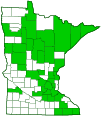elm sawfly
(Cimbex americana)
Conservation • Description • Habitat • Ecology • Distribution • Taxonomy
Conservation Status |
|
|||||||
| IUCN Red List | not listed |
|||||||
| NatureServe | not listed |
|||||||
| Minnesota | not listed |
|||||||
Description |
||
Elm sawfly large, colorful sawfly is the largest sawfly in North America. The body is bluish-black, stout, and almost parallel sided. The base of the abdomen is broadly attached to the thorax, not a slender wasp-like waist. The thorax is black and hairless, with a large yellowish-white spot on the upper (dorsal) surface. On the male the spot is distinct and conspicuous. On the female it is faint. The male abdomen may be all black, reddish-brown to black, or mostly reddish brown. The female abdomen is all black and has 3 or 4 yellowish-white spots on the sides of the abdomen. The ovipositor of the female is conspicuous and saw-like, an attribute common to all sawflies. The head is black and squarish in front. The antennae are orange with 4 to 7 segments and are slightly expanded (clubbed) at the tip. There are two pairs of transparent, smoky brown wings. The legs are bi-colored or tri-colored. The third and fourth segments (femur and tibia respectively) may be black, reddish-brown, or a combination of both. The tibia of the front leg has 2 spurs at the tip. The femur of the hind legs are especially robust. The five foot segments (tarsi) are yellow. The larvae resemble caterpillars but that name is reserved for the larvae of moths and butterflies. The body is cylindrical in shape, pale green or yellow, and warty. The head is smooth, distinctly separated from the thorax, and has no cleavage line. The eyes are black. A black longitudinal stripe extends from the thorax behind the head to the eighth abdominal segment. The thorax has 3 pairs of well-developed true legs. The abdomen has small black spots surrounding the breathing pores (spiracles). There are 7 pairs of false legs (prolegs) attached to the abdomen, unlike true caterpillars, which have only 5 pairs. |
||
Size |
||
Total length: 11 ⁄16″ to 1″ Wingspan: 1¾″ Larva: 1½″ to 2″ |
||
Similar Species |
||
Habitat |
||
Woodlands |
||
Ecology |
||
Season |
||
One generation per year: mid-May to mid-August |
||
Behavior |
||
Larvae feed with the rear of their abdomen coiled around a twig. They rest in a coiled position. They rarely cause serious damage but can cause sporadic defoliation. They are not considered forest pests. Adults use their powerful mandibles to cut horizontal gashes in the bark of twigs and small branchlets in order to feed on sap. They sometimes girdle the limb, causing it to die. |
||
Life Cycle |
||
The female uses her saw-like ovipositor to cut a slit on the underside of leaves and deposit eggs. The eggs hatch in 7 to 10 days and the larvae feed on leaves. In late summer or early fall the larvae drop to the ground and spin cocoons in the leaf litter at the base of the host tree. They overwinter in the cocoons, pupate in the spring, and emerge as adults in May or June. Some larvae spend two winters in the cocoon before pupating. |
||
Larva Food |
||
Leaves of elm, maple, birch, willow, and American basswood. |
||
Adult Food |
||
Tree sap of mostly elm and willow, but also other hardwoods including maple, birch, and American basswood. |
||
Distribution |
||||
|
Sources |
|||
| 7/21/2022 | ||||
Occurrence |
||||
Widespread |
||||
Taxonomy |
|||
Order |
Hymenoptera (Ants, Bees, Wasps, and Sawflies) | ||
Suborder |
Symphyta (Sawflies, Horntails, and Wood Wasps) | ||
Superfamily |
Tenthredinoidea (Typical Sawflies) | ||
Family |
Cimbicidae (club-horned sawflies) | ||
| Subfamily | Cimbicinae | ||
| Tribe | Cimbicini | ||
Genus |
Cimbex | ||
The International Code of Zoological Nomenclature (ICZN) is widely accepted as the arbiter for naming of organisms. The ICZN ruled years ago that the genus Cimbex is masculine, and therefore the species epithets should end in -us. This ruling has been widely adopted in Europe, but curiously not in the United States. BugGuide.net and iNaturalist have adopted the -us spelling, but almost no other sources on this side of the pond, including Integrated Taxonomic Information System (ITIS), have done so. |
|||
Synonyms |
|||
Cimbex americanus |
|||
Common Names |
|||
elm sawfly |
|||
Glossary
Femur
On insects and arachnids, the third, largest, most robust segment of the leg, coming immediately before the tibia. On humans, the thigh bone.
Ovipositor
A tube-like organ near the end of the abdomen of many female insects, used to prepare a place for an egg and to place the egg.
Proleg
A fleshy structure on the abdomen of some insect larvae that functions as a leg, but lacks the five segments of a true insect leg.
Spiracle
A small opening on the surface of an insect or arachnid through which it breathes.
Tarsus
On insects, the last two to five subdivisions of the leg, attached to the tibia; the foot. On spiders, the last segment of the leg. Plural: tarsi.
Tibia
The fourth segment of an insect leg, after the femur and before the tarsus (foot). The fifth segment of a spider leg or palp. Plural: tibiae.
Visitor Photos |
|||||
Share your photo of this insect. |
|||||
| This button not working for you? Simply email us at info@MinnesotaSeasons.com. Attach one or more photos and, if you like, a caption. |
|||||
Tiffany Lindley |
|||||
Found Elm sawfly larva or caterpillar curled up on big flat leave in my backyard. |
|||||
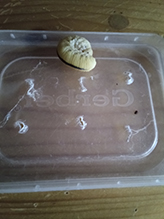 |
|||||
Melissa K. |
|||||
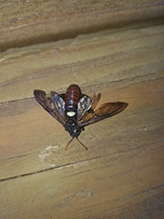 |
|||||
Jason Crowson |
|||||
Found in our kids small pool in yard |
|||||
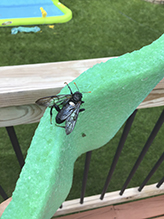 |
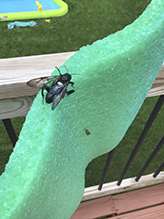 |
||||
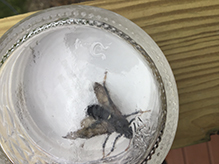 |
|||||
Susan C. |
|||||
the pink version! |
|||||
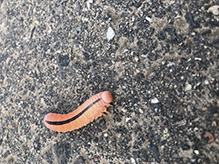 |
|||||
Tim Lantz |
|||||
Larval state |
|||||
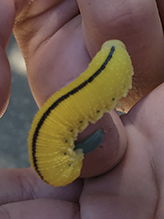 |
|||||
Courtney Walker |
|||||
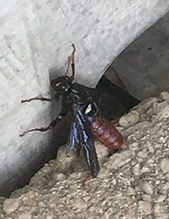 |
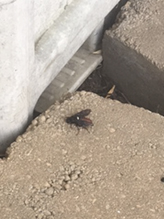 |
||||
MinnesotaSeasons.com Photos |
|||||
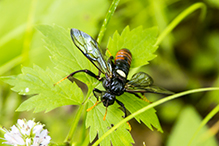 |
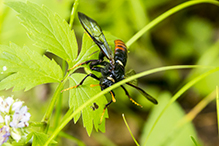 |
||||
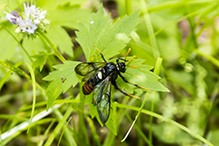 |
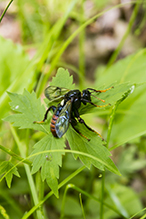 |
||||

Slideshows |
||

Visitor Videos |
|||
Share your video of this mammal. |
|||
| This button not working for you? Simply email us at info@MinnesotaSeasons.com. Attach a video, a YouTube link, or a cloud storage link. |
|||
Other Videos |
|||
| Elm Sawfly Larva (Cimbicidae: Cimbex americana) Defensive Posture Carl Barrentine |
|||
About
Uploaded on Sep 5, 2011 Photographed at the Turtle River State Park, North Dakota (05 September 2011). |
|||
| Elm Sawfly Larva (Cimbicidae: Cimbex americana) Locomotion Carl Barrentine |
|||
About
Uploaded on Sep 11, 2011 Photographed at the Turtle River State Park, North Dakota (11 September 2011). |
|||
| Elm sawfly catapillar nisbet819 |
|||
About
Published on Jul 31, 2013 :p |
|||


Last Updated:
